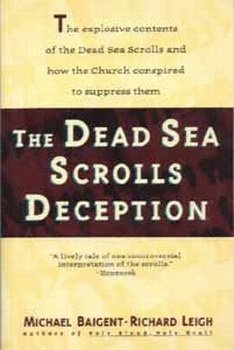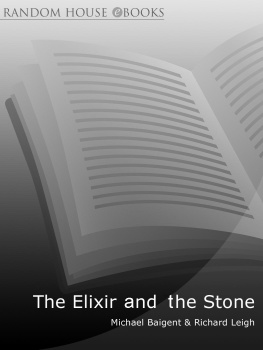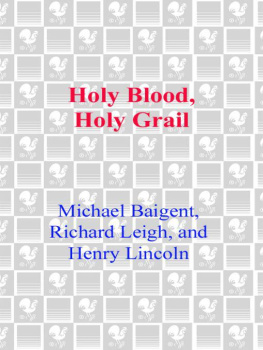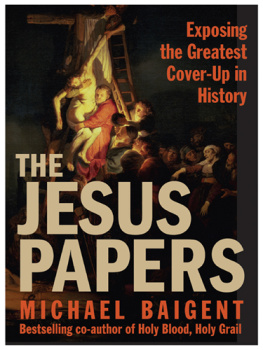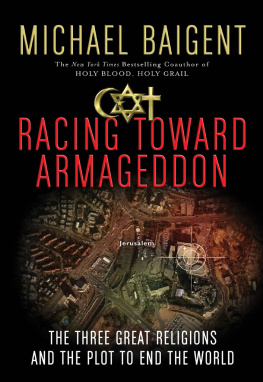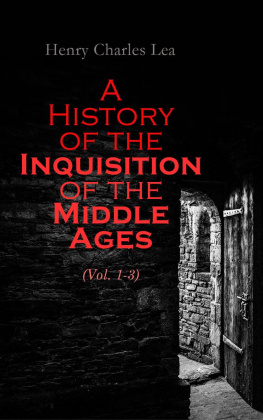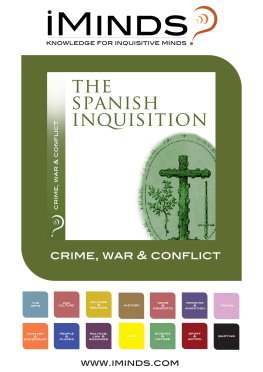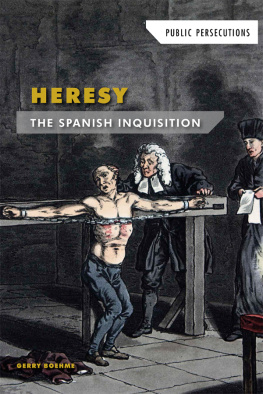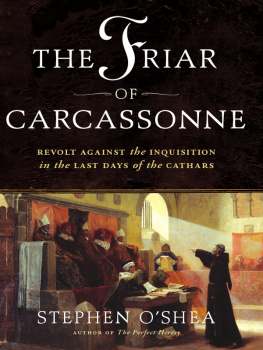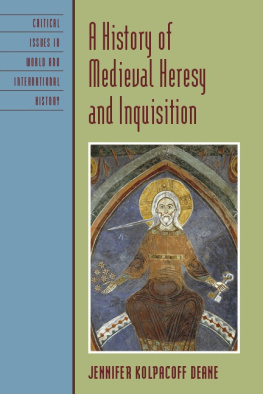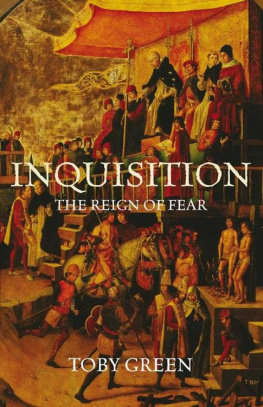PENGUIN BOOKS
THE INQUISITION
Michael Baigent was born in New Zealand in 1948 and obtained a degree in psychology from Canterbury University, Christchurch. Since 1976 he has lived in England. His most recent book was Ancient Traces, published in 1998. He has recently completed an MA in mysticism and religious experience at the University of Kent.
Richard Leigh pursued his BA at Tufts University, Boston, his MA at the University of Chicago and his Ph.D. at the State University of New York. With Michael Baigent he has co-authored a number of books, including the international bestseller The Holy Blood and the Holy Grail (with Henry Lincoln), The Dead Sea Scrolls Deception and, more recently, The Elixir and the Stone. Despite these works, he regards himself as primarily a novelist and writer of short stories. He lives in London.
MICHAEL BAIGENT AND RICHARD LEIGH
THE INQUISITION

PENGUIN BOOKS
PENGUIN BOOKS
Published by the Penguin Group
Penguin Books Ltd, 80 Strand, London WC2R 0RL, England
Penguin Putnam Inc., 375 Hudson Street, New York, New York 10014, USA
Penguin Books Australia Ltd, 250 Camberwell Road, Camberwell, Victoria 3124, Australia
Penguin Books Canada Ltd, 10 Alcorn Avenue, Toronto, Ontario, Canada M4V 3B2
Penguin Books India (P) Ltd, 11 Community Centre, Panchsheel Park, New Delhi 110 017, India
Penguin Books (NZ) Ltd, Cnr Rosedale and Airborne Roads, Albany, Auckland, New Zealand
Penguin Books (South Africa) (Pty) Ltd, 24 Sturdee Avenue, Rosebank 2196, South Africa
Penguin Books Ltd, Registered Offices: 80 Strand, London WC2R 0RL, England
www.penguin.com
First published by Viking 1999
Published in Penguin Books 2000
16
Copyright Michael Baigent and Richard Leigh, 1999
All rights reserved
The moral right of the author has been asserted
Except in the United States of America, this book is sold subject to the condition that it shall not, by way of trade or otherwise, be lent, re-sold, hired out, or otherwise circulated without the publisher's prior consent in any form of binding or cover other than that in which it is published and without a similar condition including this condition being imposed on the subsequent purchaser
ISBN: 978-0-14-192834-0
Contents
Acknowledgements
As ever, we should like to thank Ann Evans and Jonathan Clowes, not only for being our agents, but also for being consultants, managers, counsellors, intercessors, advocates, pagan Cistercians and friends, through whom the puissance of Sainte Quittire is enabled to cast its protection over us.
For their help and support in a diverse spectrum of ways, we should also like to thank Sacha Abercorn, John Ashby, Jane Baigent, Brie Burkeman, Bela Cunha, Helen Fraser, Margaret Hill, Tony Lacey, Alan McClymont, Andrew Nurnberg, Peter Ostacchini, David Peabody, John Saul, Yuri Stoyanov and Lisa Whadcock.
Again, too, our debt to libraries is immense. We should like to thank the staffs of the British Library, St Pancras, the Library of the United Grand Lodge of England, Covent Garden, and the Bodleian Library, Oxford.
Dedication
On n'oubliera le hasard
par un coup de ds
et l'orme detachera
le roi des aulnes.
Une cit rosat abritera
les ttes abattues et le
suaire gne la lumire.
A contrejour sachant
la cellule, la clart
entrera la garenne.
Les belles claircies du vent
poussent le chat herisser ses poils.
Ils se refugient dans les bruissements
de la haleine de Mlusine.
JEHAN L'ASCUIZ
Introduction
As the fifteenth century gave way to the sixteenth, Jesus returned. He reappeared in Spain, on the streets of Seville. There were no fanfares attending his advent, no choirs of angels or supernatural spectaculars, no extravagant meteorological phenomena. On the contrary, he arrived softly and unobserved. And yet the passers-by quickly recognised him, were irresistibly drawn to him, surrounded him, flocked about him, followed him. He moved modestly among them with a gentle smile of ineffable compassion, held out his hands to them, conferred his blessings upon them; and an old man among the crowd, blind from childhood, miraculously regained the faculty of sight. The multitude wept and kissed the earth at his feet while children tossed flowers before him, sang and lifted their voices in hosannas.
At the steps of the cathedral, weeping mourners were carrying inside a small open white coffin. Within it, almost hidden by flowers, lay a child of seven, the only daughter of a distinguished citizen. Urged on by the crowd, the bereft mother turned to the newcomer and beseeched him to restore the dead girl to life. The procession halted and the coffin was set down at his feet on the cathedral steps. Maiden, arise! he commanded softly, and the girl immediately sat upright, looking about, smiling, with wide wondering eyes, still holding the cluster of white roses that had been placed in her hands.
This miracle was witnessed, as he passed with his entourage of bodyguards, by the city's cardinal and Grand Inquisitor an aged man, almost ninety, tall and upright in stature, with a shrivelled face and deeply recessed eyes, in which, however, there still burned a gleam of light. Such was the terror he inspired that the crowd, despite the extraordinary circumstances, deferentially fell silent, parted and made way for him. Neither did anyone dare to interfere when, at the old prelate's behest, the newcomer was summarily arrested by his bodyguards and led off to prison.
Such is the opening of Fyodor Dostoevsky's Parable of the Grand Inquisitor, a more or less self-contained twenty-five-page narrative embedded in the 800 or so pages of The Brothers Karamazov, first published by instalments in a Moscow magazine during 1879 and 1880. The parable's real significance resides in what follows the dramatic prelude. For the reader expects, of course, that the Grand Inquisitor will be appropriately horrified when he learns the true identity of his new prisoner. That, however, is not to be the case.
When the Grand Inquisitor visits Jesus's cell, it is clear that he knows only too well whom the prisoner is; but the knowledge does not deter him. During the prolonged philosophical and theological debate that ensues, the old man remains adamant in his position. In scripture, Jesus is tempted by the devil in the wilderness with the prospect of power, of earthly authority, of secular or temporal dominion over the world. Now, a millennium and a half later, he is confronted by precisely the same temptations. When he resists them, the Grand Inquisitor consigns him to the stake.
Jesus responds only by conferring on the old man a kiss of forgiveness. Shuddering, the kiss glowing in his heart, the old man opens the door to the cell. Go, he commands, and come no more Come not at all, never, never! Released into the darkness, the prisoner disappears, never to be seen again. And the Grand Inquisitor, in full consciousness of what has just transpired, continues to adhere to his principles, continues to enforce his reign of terror, continues to sentence other victims often self-evidently innocent to the flames.
As can be seen from this perhaps oversimplified summary, Dostoevsky's Grand Inquisitor is no fool. On the contrary, he knows all too well what he is doing. He knows that he carries an onerous and debilitating responsibility on his aged shoulders to maintain civic order, to uphold the status of the Church founded in the name of the man he has just been prepared to sentence to execution. He knows the Church founded in the man's name is ultimately incompatible with the teachings of the man himself. He knows that the Church has become autonomous, the proverbial law unto itself, no longer rendering unto Caesar but usurping Caesar, presiding over its own imperium. He knows that he has been entrusted with the role of custodian and enforcer of this imperium. He knows that the edicts and acts he promulgates in that capacity will undoubtedly entail what his own theology forecasts will be his eternal damnation. He knows, in short, that he is martyring himself to evil. Because he knows that in functioning as the representative of secular and temporal power, and in tempting Jesus with such power, he is equating himself with the devil.


